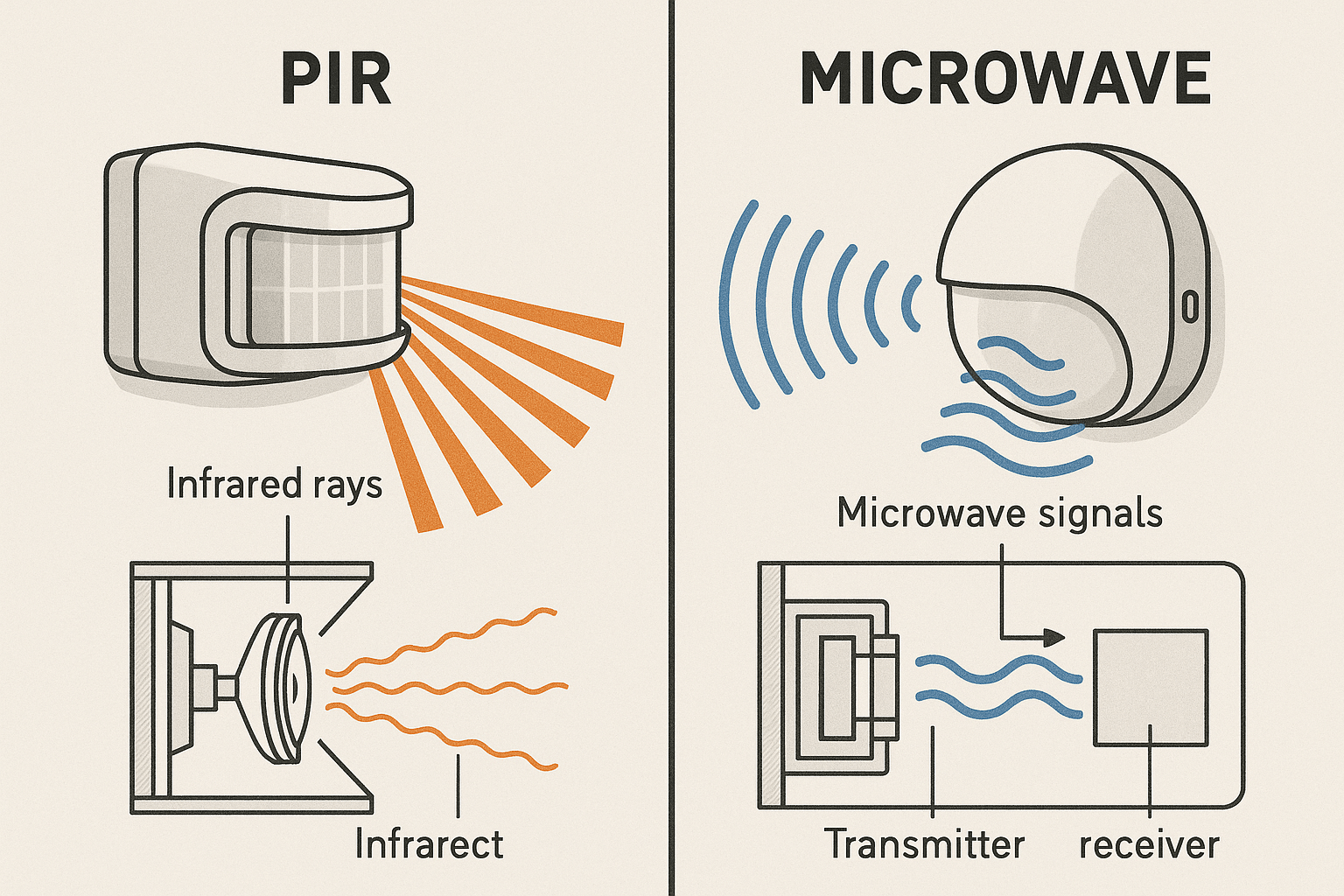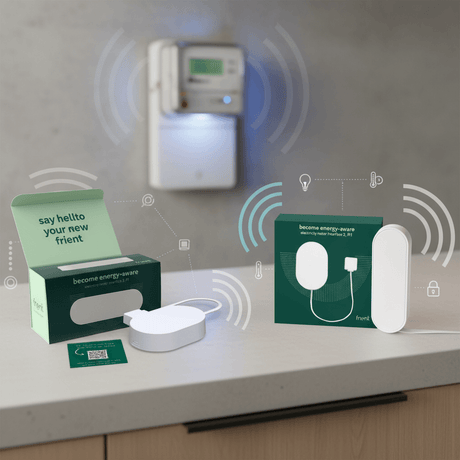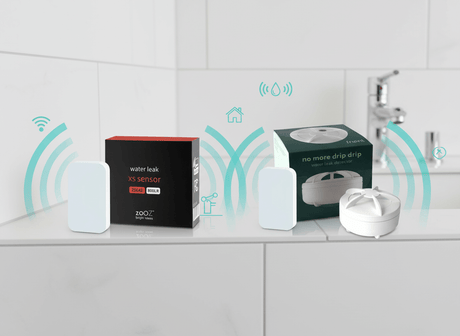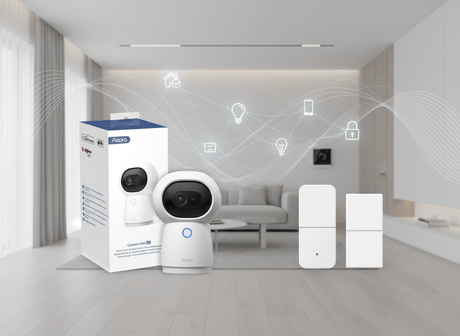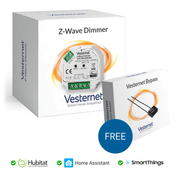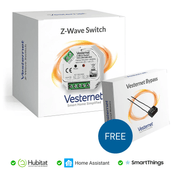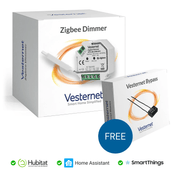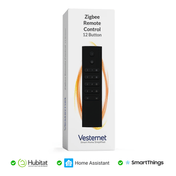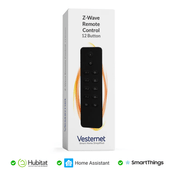Motion detection is fundamental to smart home automation, security systems, and energy management. Understanding the differences between PIR (Passive Infrared) and microwave motion sensor technologies is crucial for selecting the right solution for your specific applications. This comprehensive guide explores the underlying physics, realistic performance characteristics, and optimal use cases for each technology in smart home environments.
1. Understanding Motion Detection Fundamentals
Motion detection technology has evolved significantly over the decades, with different approaches developed to address various application requirements. The choice between PIR and microwave technologies involves understanding the fundamental physics behind each approach and how these principles translate into real-world performance characteristics in smart home applications.
The Physics of Motion Detection
Motion detection relies on identifying changes in the environment that indicate the presence or movement of objects, particularly humans. Different technologies exploit different physical phenomena to achieve this detection, each with inherent advantages and limitations.
Energy Emission and Reflection: All objects above absolute zero emit electromagnetic radiation, with the wavelength and intensity depending on temperature. Humans, being warm-blooded creatures, emit significant amounts of infrared radiation in the 8-14 micrometre wavelength range. This thermal signature forms the basis for passive infrared detection systems.
Wave Propagation and Doppler Effect: Microwave motion sensors operate on the principle of active detection, transmitting electromagnetic waves and analysing the reflected signals. When these waves encounter moving objects, the reflected signal experiences a frequency shift known as the Doppler effect, which can be detected and analysed to determine motion characteristics.
Environmental Interaction: Both technologies interact differently with environmental factors such as temperature, humidity, air movement, and physical obstacles. Understanding these interactions is crucial for selecting the appropriate technology for specific applications and environmental conditions.
2. PIR (Passive Infrared) Technology Deep Dive
Passive Infrared technology represents the most widely used motion detection method in residential and commercial applications. Understanding the principles, capabilities, and limitations of PIR technology is essential for effective implementation in smart home systems.
Operating Principles and Physics
PIR sensors detect motion by monitoring changes in infrared radiation within their field of view. The technology is termed "passive" because the sensor does not emit any energy but instead detects naturally occurring thermal radiation.
Thermal Radiation Detection: All objects emit infrared radiation proportional to their temperature. Human bodies, typically at 37°C (98.6°F), emit significant infrared energy in the 8-14 micrometre wavelength range. PIR sensors use pyroelectric materials that generate electrical signals when exposed to changing infrared radiation levels.
Pyroelectric Effect: The heart of PIR sensors is the pyroelectric detector, typically made from materials such as lithium tantalate or lead zirconate titanate. These materials exhibit the pyroelectric effect, where temperature changes cause the material to develop an electrical charge. The detector responds to the rate of temperature change rather than absolute temperature, making it sensitive to moving heat sources.
Dual-Element Design: Most modern PIR sensors use dual pyroelectric elements arranged to provide differential detection. This design helps cancel out environmental changes that affect both elements equally (such as gradual temperature changes) while maintaining sensitivity to localised thermal changes caused by moving objects. This dual-element approach significantly reduces false alarms from environmental factors.
Optical Systems and Fresnel Lenses: PIR sensors use optical systems, typically Fresnel lenses, to focus infrared radiation onto the detector and create detection zones. These lenses divide the sensor's field of view into alternating sensitive and insensitive zones, creating a pattern that enhances motion detection while reducing sensitivity to gradual temperature changes.
Detection Characteristics and Performance
PIR sensors have specific detection characteristics that determine their suitability for different smart home applications and environments.
Realistic Detection Range: Consumer PIR sensors typically provide detection ranges from 3 to 15 metres, depending on the lens design and sensor sensitivity. While specialised long-range industrial PIR sensors can detect motion at distances up to 30 metres or more, these are not commonly used in residential smart home applications due to cost and power requirements.
Angular Coverage: PIR sensors offer various angular coverage patterns, from narrow 15-degree beams for corridor applications to wide 120-degree patterns for room coverage. Some sensors provide 360-degree coverage for ceiling mounting, while others offer adjustable coverage patterns through interchangeable lenses.
Sensitivity Factors: PIR sensor sensitivity depends on several factors including the temperature difference between the moving object and background, the size of the moving object, the speed of movement, and the direction of movement relative to the sensor. Cross-movement (perpendicular to the sensor) is typically detected more easily than radial movement (directly toward or away from the sensor).
Power Consumption: One of the key advantages of PIR sensors for smart home applications is their very low power consumption. Typical PIR sensors consume microamps in standby mode, making them ideal for battery-powered devices that need to operate for months or years without battery replacement.
3. Microwave Technology Deep Dive
Microwave motion sensors represent an active detection technology that offers unique capabilities and characteristics compared to PIR sensors. Understanding microwave technology is essential for applications where its specific advantages are beneficial.
Operating Principles and Physics
Microwave motion sensors operate by transmitting electromagnetic waves and analysing the reflected signals to detect motion through the Doppler effect.
Doppler Effect Fundamentals: When electromagnetic waves encounter a moving object, the frequency of the reflected waves is shifted relative to the transmitted frequency. This frequency shift, known as the Doppler effect, is proportional to the velocity of the moving object and can be detected and analysed to determine motion characteristics.
Frequency Bands and Regulations: Microwave motion sensors typically operate in the 10.525 GHz (X-band) or 24.125 GHz (K-band) frequency ranges, which are allocated for motion detection applications. These frequencies provide a good balance between detection sensitivity, component availability, and regulatory compliance.
Antenna Design and Beam Patterns: Microwave sensors use antennas to transmit and receive electromagnetic waves. The antenna design determines the sensor's detection pattern, range, and sensitivity. Patch antennas, horn antennas, and lens antennas are commonly used, each offering different characteristics in terms of beam width, gain, and size.
Detection Characteristics and Performance
Microwave sensors have distinct detection characteristics that differ significantly from PIR sensors.
Penetration Capabilities: Microwave signals can penetrate many non-metallic materials including drywall, wood, plastic, and glass. However, performance is significantly reduced when penetrating barriers, with both range and sensitivity decreasing based on material thickness and density. While this penetration capability enables unique applications, it can also create challenges in controlling detection areas precisely.
Realistic Detection Range: Consumer microwave sensors typically achieve detection ranges of 5-20 metres indoors, depending on environmental conditions and obstacles. While industrial microwave sensors can achieve ranges over 100 metres under ideal conditions, typical smart home applications use sensors with more modest range capabilities that are better suited to residential environments.
Detection Overshoot: Due to their penetration capabilities and reflection characteristics, microwave sensors can sometimes detect movement outside their intended coverage area. This "overshoot" can lead to unwanted triggering from movement in adjacent rooms or outdoor areas, requiring careful positioning and configuration.
Velocity Sensitivity: Microwave sensors are particularly sensitive to the velocity of moving objects. Fast-moving objects produce larger Doppler shifts and are more easily detected, while very slow movements may be below the detection threshold. This characteristic can be both an advantage and a limitation depending on the application.
Power Consumption: Microwave sensors typically consume significantly more power than PIR sensors due to their active transmission requirements. This higher power consumption makes them less suitable for battery-powered applications and may require mains power or frequent battery replacement.
4. Comparative Performance Analysis
Understanding the relative performance characteristics of PIR and microwave technologies is crucial for selecting the appropriate sensor for specific smart home applications and environments.
Detection Accuracy and Reliability
Both technologies have different strengths and weaknesses in terms of detection accuracy and reliability in smart home environments.
False Alarm Characteristics: PIR sensors generally have lower false alarm rates in stable environments but can be triggered by heat sources (such as heating systems), significant air movement, and pets. Modern PIR sensors often include temperature compensation to reduce HVAC-related false alarms. Microwave sensors may have higher false alarm rates due to electromagnetic interference, reflections, and overshoot detection but are less affected by thermal disturbances.
Detection Probability: PIR sensors excel at detecting human-sized objects with significant thermal signatures but may miss small or slow-moving objects. Microwave sensors can detect smaller movements and are less dependent on thermal contrast but may be affected by the material properties of the moving object and can detect unwanted movement through barriers.
Environmental Robustness: PIR sensors are more robust in electromagnetically noisy environments but sensitive to thermal disturbances. Microwave sensors are less affected by temperature variations but may be impacted by electromagnetic interference from sources such as LED drivers, switching power supplies, and other electronic devices, though modern designs have improved EMI resistance.
Cost and Complexity Considerations
Practical considerations such as cost and installation complexity significantly impact sensor selection for smart home applications.
Purchase Cost: PIR sensors are generally significantly less expensive than microwave sensors, making them more cost-effective for applications where their capabilities are sufficient. This cost difference is particularly important when multiple sensors are required throughout a home.
Installation Complexity: PIR sensors are typically easier to install and configure due to their predictable line-of-sight detection patterns. Microwave sensors often require more careful positioning and configuration to avoid interference issues and unwanted detection areas due to their penetration capabilities.
Maintenance Requirements: PIR sensors generally require less maintenance and calibration compared to microwave sensors. The simpler technology and lower power consumption of PIR sensors contribute to better long-term reliability in many applications.
5. Dual Technology and Hybrid Solutions
Combining PIR and microwave technologies in dual-technology sensors can overcome the limitations of individual technologies while providing enhanced reliability and performance for critical applications.
Dual Technology Operating Principles
Dual technology sensors incorporate both PIR and microwave detection methods in a single device, using various logic schemes to combine the outputs.
AND Logic Configuration: In AND logic mode, both PIR and microwave sensors must detect motion simultaneously to trigger an alarm. This configuration significantly reduces false alarms but may also reduce sensitivity to genuine motion events. The approach is commonly used in high-security applications where false alarms are particularly problematic.
OR Logic Configuration: In OR logic mode, either sensor can trigger an alarm independently. This configuration maximises sensitivity and detection probability but may increase false alarm rates. The approach is useful in applications where missing a genuine detection is more problematic than occasional false alarms.
Intelligent Fusion Algorithms: Advanced dual technology sensors use sophisticated algorithms to analyse the outputs from both sensors, considering factors such as signal strength, timing, and pattern recognition. These systems can adapt their logic based on environmental conditions and historical performance, providing optimal detection while minimising false alarms.
Applications for Dual Technology
Dual technology sensors are particularly valuable in challenging environments or critical applications.
High-Security Applications: Where false alarms are costly or disruptive, dual technology sensors with AND logic can provide high reliability while maintaining good detection performance.
Challenging Environments: In environments with variable temperature conditions, electromagnetic interference, or other factors that might affect single-technology sensors, dual technology approaches can provide more consistent performance.
Critical Safety Applications: For applications where reliable detection is essential for safety, dual technology sensors can provide redundancy and enhanced reliability.
6. Environmental Considerations and Limitations
Understanding how environmental factors affect different motion sensor technologies is crucial for proper selection, installation, and configuration in smart home applications.
Indoor Environmental Factors
Indoor environments present unique challenges and considerations for motion sensor performance.
HVAC System Interactions: Heating, ventilation, and air conditioning systems can significantly affect both PIR and microwave sensors. Air movement can cause thermal disturbances that trigger PIR sensors, though modern sensors often include compensation features. Metallic ductwork can create reflections that affect microwave sensors. Proper sensor placement relative to HVAC components is essential.
Lighting Considerations: Incandescent and halogen lights generate significant heat that can interfere with PIR sensors by creating thermal disturbances. Modern LED and fluorescent lights typically don't cause significant interference with either technology, though some older microwave sensors might experience minor EMI from LED drivers or ballasts.
Pet Considerations: Pets and small animals can trigger motion sensors, particularly PIR sensors that detect their thermal signatures. Pet-immune sensors use techniques such as specialised lens designs that create "pet alleys" near the floor, elevated mounting positions that reduce sensitivity to small objects, and dual-element designs that require larger objects to trigger detection. These approaches are based on the physical size and heat signature differences between pets and humans, not weight measurement.
Outdoor Environmental Challenges
Outdoor applications introduce additional environmental factors that can significantly impact sensor performance.
Weather Resistance: Outdoor sensors must withstand various weather conditions including rain, snow, wind, and temperature extremes. Weatherproof enclosures must protect sensitive electronics while maintaining sensor functionality. Condensation and moisture ingress can cause performance degradation or failure.
Temperature Extremes: Extreme temperatures can affect both sensor electronics and detection performance. PIR sensors may lose sensitivity in very hot conditions where the temperature differential between humans and background is reduced. Cold temperatures can affect battery performance and electronic component characteristics.
Microwave Sensor Outdoor Limitations: While microwave sensors can work outdoors, their uncontrolled penetration and reflection characteristics can make them less reliable for perimeter security unless carefully configured. Reflections from buildings, vehicles, and other objects can create unwanted detection areas that are difficult to predict or control.
Vegetation and Seasonal Changes: Moving vegetation can trigger motion sensors, particularly during windy conditions. Seasonal changes in vegetation can alter detection patterns and coverage areas. Sensors must be positioned and configured to minimise false alarms from natural movement while maintaining detection capability.
7. Selection Criteria and Best Practices
Selecting the appropriate motion sensor technology requires careful consideration of application requirements, environmental conditions, and performance trade-offs specific to smart home applications.
Application-Based Selection Guidelines
Different smart home applications have varying requirements that favour different motion sensor technologies.
Security and Intrusion Detection: For home security applications, PIR sensors are often preferred for indoor use due to their proven reliability, low false alarm rates, and predictable detection patterns. Outdoor security applications may benefit from dual technology sensors for enhanced reliability, though careful positioning is required to avoid environmental false alarms.
Lighting Control and Energy Management: Automatic lighting control typically favours PIR sensors due to their low power consumption, cost-effectiveness, and reliable occupancy detection. The predictable detection patterns make it easier to configure lighting zones appropriately. Battery-powered smart switches particularly benefit from PIR technology due to its minimal power requirements.
HVAC and Climate Control: Occupancy detection for smart thermostats and HVAC control can use either technology depending on the specific installation. PIR sensors work well in most residential applications, while microwave sensors might be preferred in commercial or industrial settings with challenging thermal environments.
Smart Home Automation: For general smart home automation triggers, PIR sensors offer the best balance of cost, reliability, and battery life for most applications. Microwave sensors might be considered for specific applications requiring barrier penetration or detection of very small movements.
Installation and Configuration Best Practices
Proper installation and configuration are essential for optimal motion sensor performance in smart home applications.
Mounting Height and Angle: PIR sensors typically perform best when mounted 2.5-3 metres high with a slight downward angle to optimise detection patterns and reduce pet false alarms. The mounting height should provide good coverage of the intended area while minimising unwanted detection zones.
Avoiding Interference Sources: Position sensors to minimise interference from known sources such as heating vents, direct sunlight, or electromagnetic sources. For PIR sensors, avoid mounting near heat sources or in direct sunlight. For microwave sensors, consider potential reflection sources and electromagnetic interference from nearby electronic devices.
Coverage Optimisation: Test sensor coverage before final installation to ensure appropriate detection zones and identify any dead spots or unwanted detection areas. Use temporary mounting to verify performance before permanent installation. Consider the specific requirements of your smart home system and adjust sensitivity settings accordingly.
Power Considerations: For battery-powered smart home devices, consider the power consumption differences between sensor types. PIR sensors typically enable much longer battery life, which may be a deciding factor for wireless sensors that are difficult to access for battery replacement.
8. Future Trends and Emerging Technologies
Motion detection technology continues to evolve with advances in sensors, signal processing, and artificial intelligence creating new capabilities and applications for smart home systems.
Advanced Signal Processing and AI
Modern motion sensors increasingly incorporate advanced signal processing and artificial intelligence to improve performance and capabilities.
Machine Learning Algorithms: Machine learning algorithms can analyse motion patterns to distinguish between different types of movement, reducing false alarms and improving detection accuracy. These systems can learn from historical data to adapt to specific environments and user patterns, improving performance over time.
Pattern Recognition: Advanced pattern recognition can identify specific types of motion such as human walking patterns, pet movement, or falling objects. This capability enables more sophisticated smart home automation and reduces false alarms from unwanted motion sources.
Adaptive Sensitivity: Intelligent sensors can automatically adjust their sensitivity based on environmental conditions, time of day, and historical performance. This adaptive capability can optimise performance without manual intervention and maintain effectiveness as conditions change throughout the day and seasons.
Emerging Sensor Technologies
New sensor technologies are being developed that may complement or replace traditional PIR and microwave sensors in smart home applications.
Advanced Radar Technologies: Ultra-wideband (UWB) and frequency-modulated continuous wave (FMCW) radar offer improved resolution and capabilities compared to traditional microwave sensors. These technologies can provide detailed information about object size, distance, velocity, and even vital signs such as breathing and heart rate.
Computer Vision and Privacy-Preserving Analytics: Camera-based motion detection with advanced image processing can provide detailed information about detected objects while preserving privacy through edge processing and anonymisation techniques. These systems can distinguish between people, pets, and objects while maintaining user privacy.
Multi-Modal Sensing: Combining different sensing technologies (optical, acoustic, vibration, radar) in single devices can provide more comprehensive and reliable detection while enabling new applications such as fall detection, health monitoring, and advanced home automation scenarios.
Integration and Connectivity Trends
Motion sensors are increasingly integrated into broader smart home and IoT ecosystems with enhanced connectivity and intelligence.
Wireless Connectivity Evolution: Modern motion sensors incorporate various wireless technologies including Wi-Fi, Zigbee, Z-Wave, and emerging protocols like Matter. These connectivity options enable remote monitoring, configuration, and integration with cloud-based services and mobile applications.
Edge Computing Capabilities: Local processing capabilities in motion sensors enable more sophisticated analysis and decision-making without requiring cloud connectivity. This can improve response times, reduce bandwidth requirements, enhance privacy, and provide more reliable operation during internet outages.
Interoperability and Matter Integration: The Matter standard aims to improve interoperability between different smart home devices and platforms. This can simplify motion sensor integration and provide more flexibility in system design and expansion, allowing sensors from different manufacturers to work together seamlessly.

